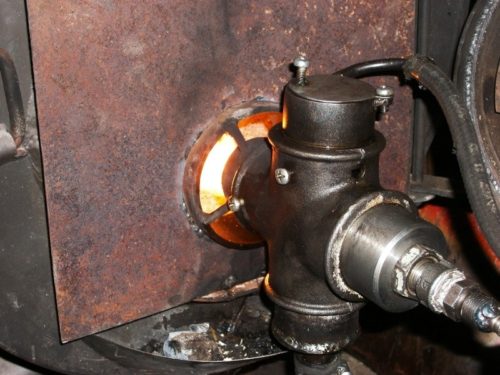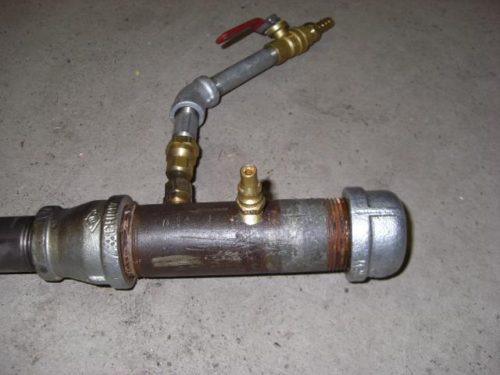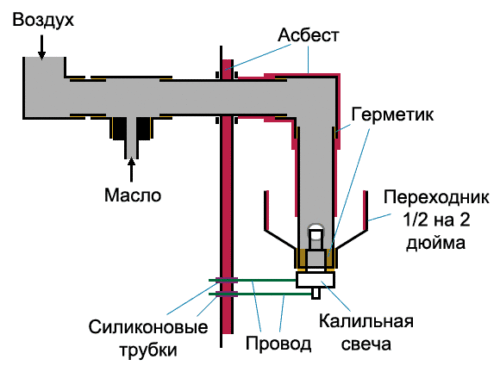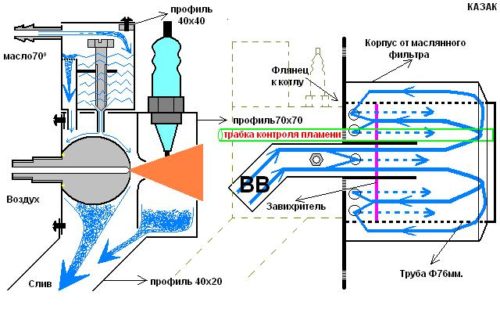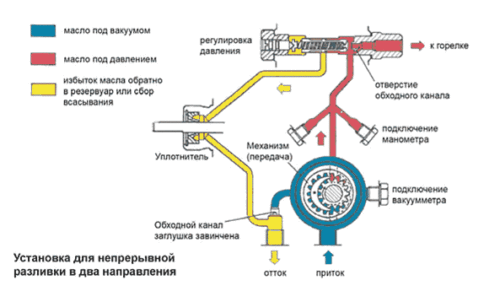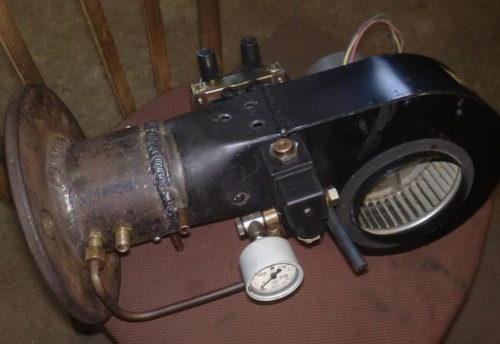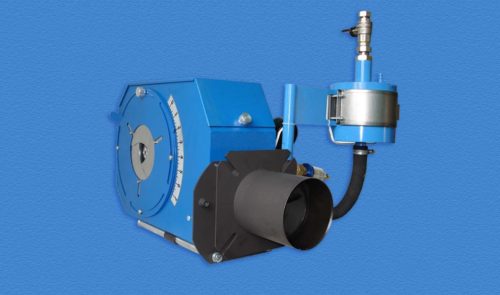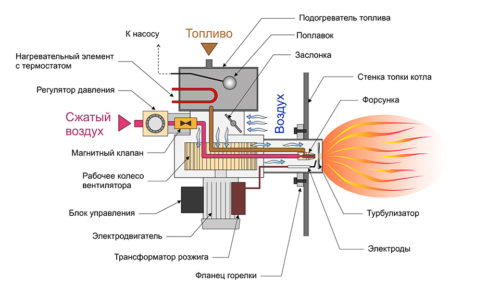Constantly growing prices for traditional fuel are forced by the owners of private houses to look for an alternative to gas, wood or fuel oil. One of these sources can be a utilization of spent oil, which per year millions of tons accumulate per year. Not only the motor, which change on car services, can be machine oils used for industrial aggregates, vegetable oils of food industry enterprises. Their burning can bring a good effect in both economic and environmental terms.
Content
- Principle of operation of the fuel burner for spent oil
- Advantages and disadvantages of burner for boilers on spent oil
- Difference of the burner on spent oil from soldering lamp
- Production of burner on spent oil with their own hands
- Burner on spent oil do it yourself: drawings, photo
- Burners on spent oil do it yourself: video
The operation of a conventional boiler, which is designed for burning gas, fuel oil or diesel fuel on spent oil is almost impossible. The problem lies in the fuel. In contrast to gas or diesel oil, the oil is very difficult to set fire. The second problem is the purity of the fuel itself. The oil that was used in internal combustion engines often contains the impurities of gasoline or coolant, which greatly complicates its ignition. For working out a special design of the burner is needed. How to make a burner on spent oil with your own hands - further in the article.
Principle of operation of the fuel burner for spent oil
The usual nozzle, which is installed in a gas or liquid heating boiler, works as follows:
- Fuel, if it is a fuel oil or diesel fuel, pumps into a special reservoir, where it is preheated using heat from the boiler operation.
- Then, with the help of a pump, fuel under high pressure is injected at the nozzle, which has a very narrow outlet.
- Thanks to the nozzle, the fuel is injected in the form of a fog that is easily flammable.
When used in such a waste scale, the ordinary nozzle is often clogged, and the oil is very bad. The decision of this problem came up with the English inventor Robert Babbington, who patented a special burner for diesel fuel, which works fine on the spent oil. After the term of the patent has expired, the drawings of this invention were widely access. As it turned out later, the design proposed by Babbington is quite simple, and almost anyone can repeat it, who is minimally familiar with the locksmith.
The principle of the Babbington burner is as follows:
- A compressed air is fed into the nozzle through the nozzle. It has a spherical surface at which the exhaust oil is served from above.
- In the center of the nozzle there is a hole with a diameter of 0.1-0.3 mm, through which compressed air is supplied. Due to the strength of the surface tension, the oil forms a thin film on a spherical surface.
- Due to the pressure of the air from the nozzle, the thin layer of oil is supplied to the nozzle, where he burns.
- The unlawful material flows into the sump, after which the pump is supplied to the nozzle. At the same time, for better heating of the supplied oil (it improves its fluidity and, accordingly, the film thickness decreases) the feed tube is placed near the nozzle, the temperature of which is high.
This method allows to more effectively burn fuel of various origin and with a high content of non-combustible impurities.
Advantages and disadvantages of burner for boilers on spent oil
Advantages:
- The main advantage of Babbington burner on spent oil is its unlimited possibilities. In this design, you can use any oil work, varying degrees of contamination.
- Due to the absence of pressure testing and serving it through the nozzle, the burner is almost never clogged, which reduces its maintenance frequency.
- Another important advantage of such a burner is the simplicity of its design. If desired and elementary locksmith skills, make such a design will not be much difficulty. At the same time, the materials used are not worth too expensive, which allows it to make it without much material costs.
The disadvantage of such a burner rather is the material that is burned during its help. Oil is rather dirty material, if you compare it with gas. Therefore, most often this material is used for heating industrial premises, since it is shedding it to the floor, and they will have to face it anyway, they can spoil the flooring.
Another problem when using this burner can be the constant need for air injection. This requires a constantly working compressor. In the absence of electricity, the boiler can just stop.
Difference of the burner on spent oil from soldering lamp
Many often think that the principle of operation of the burner on the exhaust oil is similar to the work of the soldering lamp. However, this is not the case. The fact is that the fuel that is poured into the tank of the solder lamp is fed to the nozzle without mixing with air. That air that is pumped into the inside with the help of a manual pump is needed only for injection pressure, due to which the fuel is fed to the nozzle. Passing through the fuel line, gasoline is heated with heat from the nozzle and expands, due to which the pressure on the nozzle increases and the fuel is fed under high pressure in the form of fog. Already in the nozzle it mixes with air and is set on fire.
In the burner of Babbington, the opposite is the opposite. Fuel is not fed under high pressure, flows on the hemisphere by gravity. At the same time it is mixed with air immediately and is fed to the nozzle where it burns.
The only similarity is heating fuel in the pipeline from the nozzle temperature.
Production of burner on spent oil with their own hands
As mentioned earlier, the design of such a burner is pretty simple. In the housing of the homemade burner on the spent oil, it is necessary to suspend the air supplied tube with a tip in the form of a hemisphere, as well as the exhaust oil supply tube and the highways of the unburned fuel.
Necessary materials:
- For the burner body, a plumbing tee is perfect. It is better to use the steel item. Copper is too soft for these purposes, and it is worth a copper tee much more expensive than steel, which is very important in the manufacture of the burner for the first time, as you can spoil the material. The inner diameter of the thread of the tee must be at least 50 mm.
- For nozzles, it is possible to provide a regular bureau with an external diameter of the thread of 50 mm. Its length should be at least 100 mm.
- For the manufacture of the fuel supply pipe in the burner body, a copper tube is used with a diameter of 10 mm with fittings pressed upon it. If this is done independently problematic, you can contact any auto shop, which trades parts for cars. They often sell pipelines on the brake and fuel system, and can also make it to order at the required length. It will only be necessary to pay the cost of the pipe, fittings and work on their searches. The length of the tube should be sufficient in order to make several turns around the nozzle for heating the fuel supplied.
- To make the air supply nozzle, a steel pipe with a diameter of at least 10 mm is required.
- At the end of the tube, the hemisphere is welded, made of steel to ensure air supply. The diameter of it should be so that it is fluent in the tee.
- The plug with the outer diameter of the thread is at least 50 mm. It will be necessary to install the air pipeline.
In addition to the materials for the production of this work, the following tools will be needed:
- Semi-automatic welding.
- Drill and drill set.
- Set of taps for metric and pipe thread.
Order order:
- For the convenience of work, it is better to make an approximate drawing of the burner on the exhaust oil. This will greatly facilitate the process of selecting and manufacturing parts, as well as assembling the entire structure.
- First of all, it is necessary in the center of the plug to do a hole with a diameter of the pipe with a diameter.
- Next, a semisfer is welded to the end of the air supply pipe. Before that, a hole is done in it strictly in the center. There may be problems with this, as it is unlikely that there are a suitable tool in the home instruments. Solution of the problem can be the installation of gibera of consulting internal diameter.
- After the hemisphere is welded to the tube, the latter is welded to the plug. It is necessary to make it most accurately so that the air supply tube stood strictly in the center of the burner housing. Otherwise, the air flow will not fall into the center of the nozzle, but on its walls, which will make the burner inefficient work.
- Then the plug is screwed into the tee. And with the help of the caliper, the position of the hemisphere is measured. It is in the place where it will be located in the housing a hole for fuel supplying. It must accurately fall on the top arc to drain across the entire hemisphere.
- In the hole using a tap, a thread for fixing the fitting is cut. Then a sagon is screwed into the yield of the tee, thereby installing the nozzle. The oil supply tube in the burner is driven by 2-3 turns around the nozzle and connects to the system of testing.
- Air supply tube is attached to the pumping compressor. In the burner case, it is necessary to make a hole for the ignition of the mixture. Bottom into the tee screws down the nozzle of the removal of unburned oil.
- Now the burner on the exhaust oil can be experienced. To begin with, it is fixed on a special bracket. In order for the tests not to cause a fire, it is desirable to conduct them in an open area. For a start, a compressed air is supplied to the burner, and then the exhaust oil, after which the mixture is set on fire. As the burner warmed, her work should be much more stable.


